JOSEPH TREVITHICK
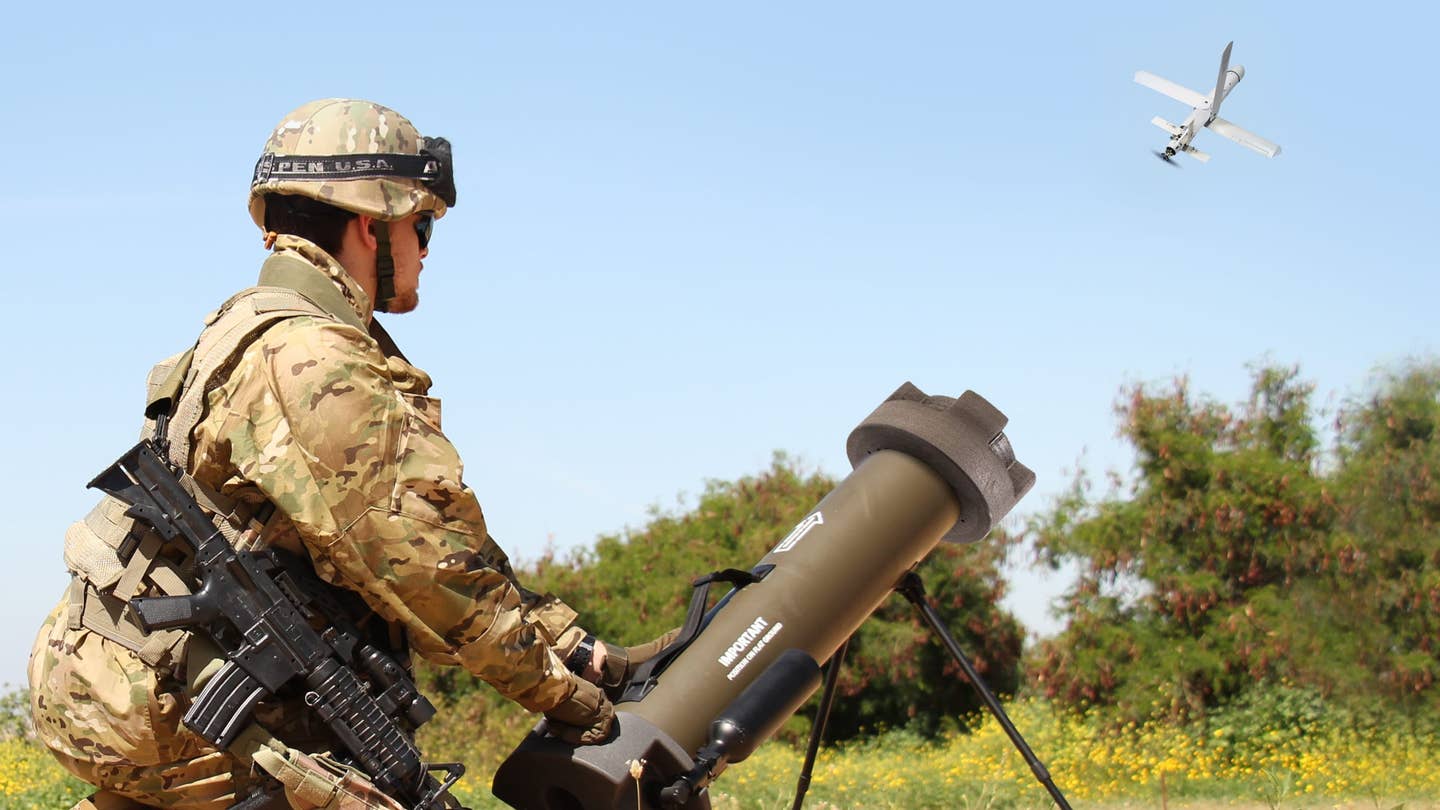
Small loitering munitions, also known as kamikaze drones, with new specialized seekers would be a valuable additional tool for finding and taking out enemy land-based electronic warfare systems, according to U.S. Special Operations Command. This underscores the threat posed by electronic warfare capabilities that potential adversaries, especially China and Russia, have already fielded and new systems they are continuing to develop. It also speaks to ongoing discussions about the roles of U.S. special operations in any future high-end conflict after decades of focusing on counter-terrorism, counter-insurgency, and other lower-intensity operations.
A contracting notice posted online discusses the core requirements U.S. Special Operations Command (SOCOM) has for what it is currently calling the Counter-Electronic Countermeasure Seeker, or CECMS.
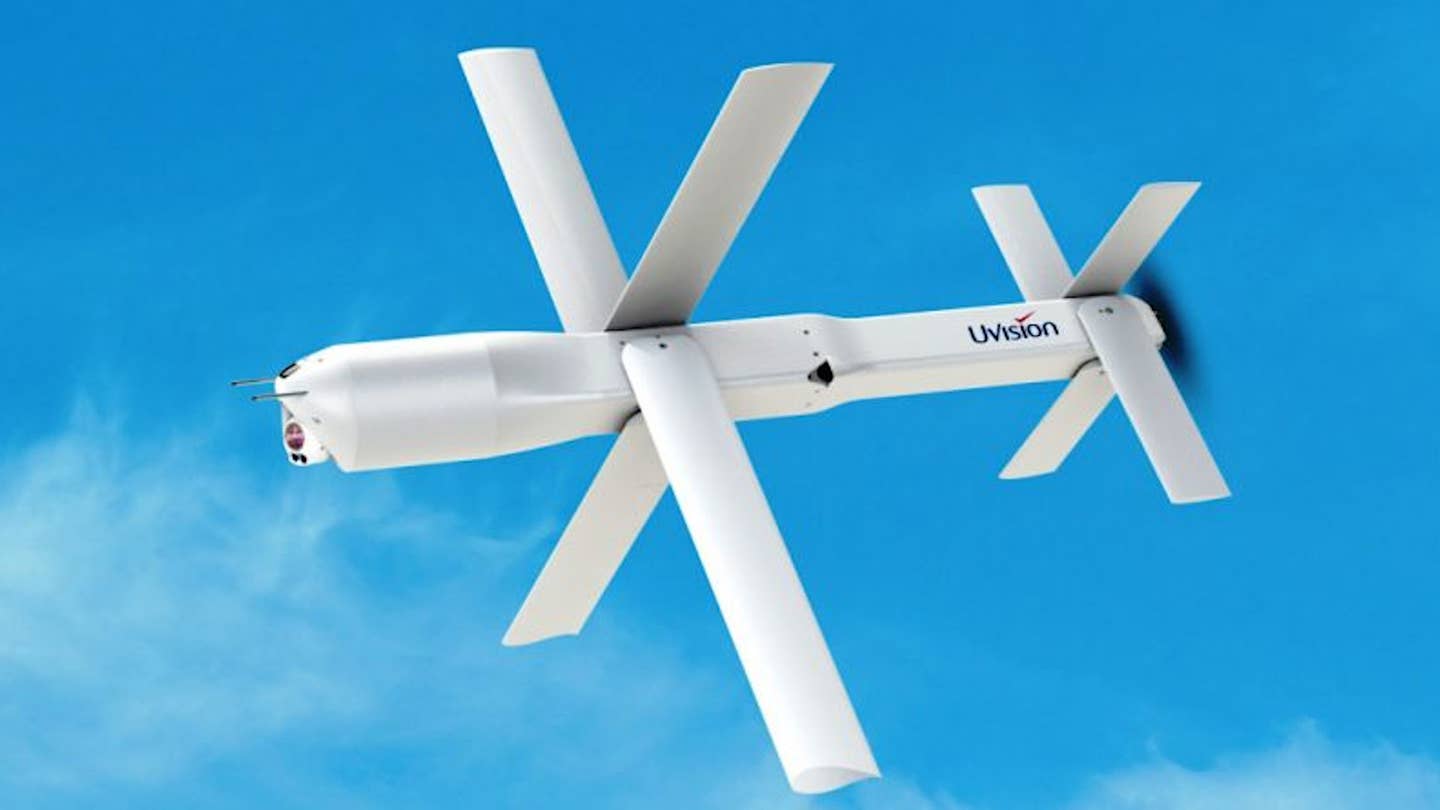
The UVision Hero-120 seen here is one of the loitering munitions SOCOM says could potentially make use of the new Counter-Electronic Countermeasure Seeker.
Current conflicts have "shown the tactical and operational impact of enhance[d] ISR [intelligence, surveillance, and reconnaissance] and long‐range precision strike capabilities," one contracting notice released earlier this month explains. However, "the resulting requirement for dispersion complicates command, control, and logistics which are further degraded by electronic attack on communication and navigation systems."
"GPS and command link jamming degrades ISR and precision munition capabilities needed for attack in depth against command, control, and logistics centers," it continues. "While this effects [sic; affects] both sides it favors the side that can employ mass without regard for casualties. Under the cover of the jamming, he can prepare, and mass [forces] then turn it off to launch a wave of guided munitions and/or a major ground/air attack."
The notice also highlights that historically dedicated anti-radiation munitions, weapons that are specifically designed to home in on targets using their radiofrequency emissions, have been designed primarily to engage enemy air defense radars and to be launched by larger platforms. A prime example of this is the AGM-88 series of air-launched anti-radiation missiles that the U.S. Air Force, Navy, and Marine Corps employ from various fixed-wing aircraft.
What SOCOM wants now is a new seeker to enable a much smaller and potentially man-portable anti-radiation capability, with a particular focus on loitering munitions. The aforementioned contracting notice specifically mentions the Uvision Hero-120 loitering munition, which the U.S. special operations community is already acquiring, and the Altius 700, a highly modular drone that can be tube-launched from a variety of platforms, as potential recipients of the CECMS.
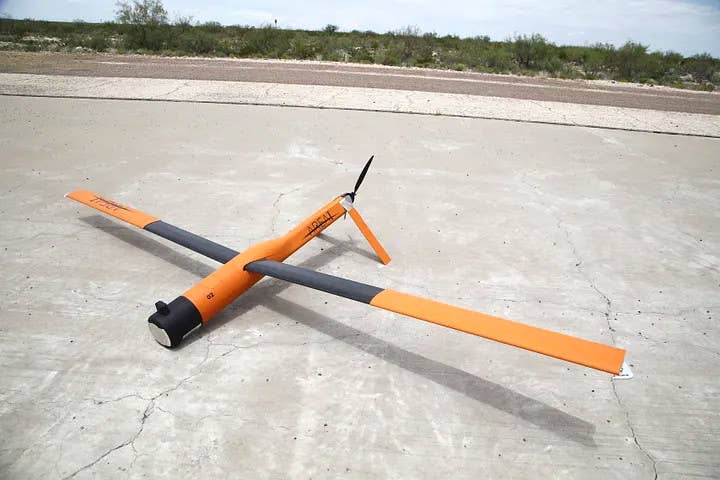
An Altius 700 drone.
It's, of course, worth noting that loitering munitions, which Israeli companies pioneered and continue to be world leaders in, first emerged as a result of a desire for alternatives to traditional air-launched anti-radiation weapons. Many kamikaze drones in production today are still configured for this particular mission set. They are now steadily proliferating thanks in no small part to Iran, which has become a major source for uncrewed systems of this type, both to militant groups and the armed forces of nation-states, now including Russia.
SOCOM also lays out a notional concept of operations for employing the CECMS-equipped kamikaze drones wherein they would "penetrate [into] electronic countermeasure operational environments and loiter" and be able to "conduct a preplanned autonomous attack on active emitters." Though how the seeker might actually function looks to be left relatively open-ended at this state, the idea is that it would be capable of using various data, such as "location, type of signal and jam to signal ratio, etc., ... [to] determine threat identity to prevent fratricide."
SOCOM's contracting notice does point out that a CECMS that is small enough to fit into something like a Hero-120 or an Altius 700 could be readily adaptable to small, but more traditional munitions. The AGM-114 Hellfire missile and 70mm rockets are also specifically mentioned as potential weapons the seeker could be integrated onto in the future.
A US Air Force MQ-9 Reaper drone fires an AGM-114 Hellfire missile. DOD
If CECMS can be integrated onto small drones and munitions as a seeker, there is the possibility that could be added to the sensor suite on larger ISR platforms, too, according to SOCOM. This would help them be better able to hunt for enemy electronic warfare systems, which could then be engaged by other means, including by artillery fire, the contracting notice emphasizes.
There are still important questions that seem to still need to be answered about how CECMS would be intended to function and not be vulnerable itself to the kinds of electronic warfare systems it is designed to seek out. Getting it into a very small package could present challenges, as well.
It is interesting to point out here that the Air Force disclosed the existence of a radiofrequency seeker small enough to be integrated onto the GBU-39/B Small Diameter Bomb (SDB), a relatively small air-dropped precision-guided munition, back in 2021. At that time, the seeker was described as offering "home-on-GPS-jam" capability, which sounds very much in line with what SOCOM is interested in, at least on a general functional level. Various kinds of home-on-jam capabilities are found on other existing air-launched munitions, as well.
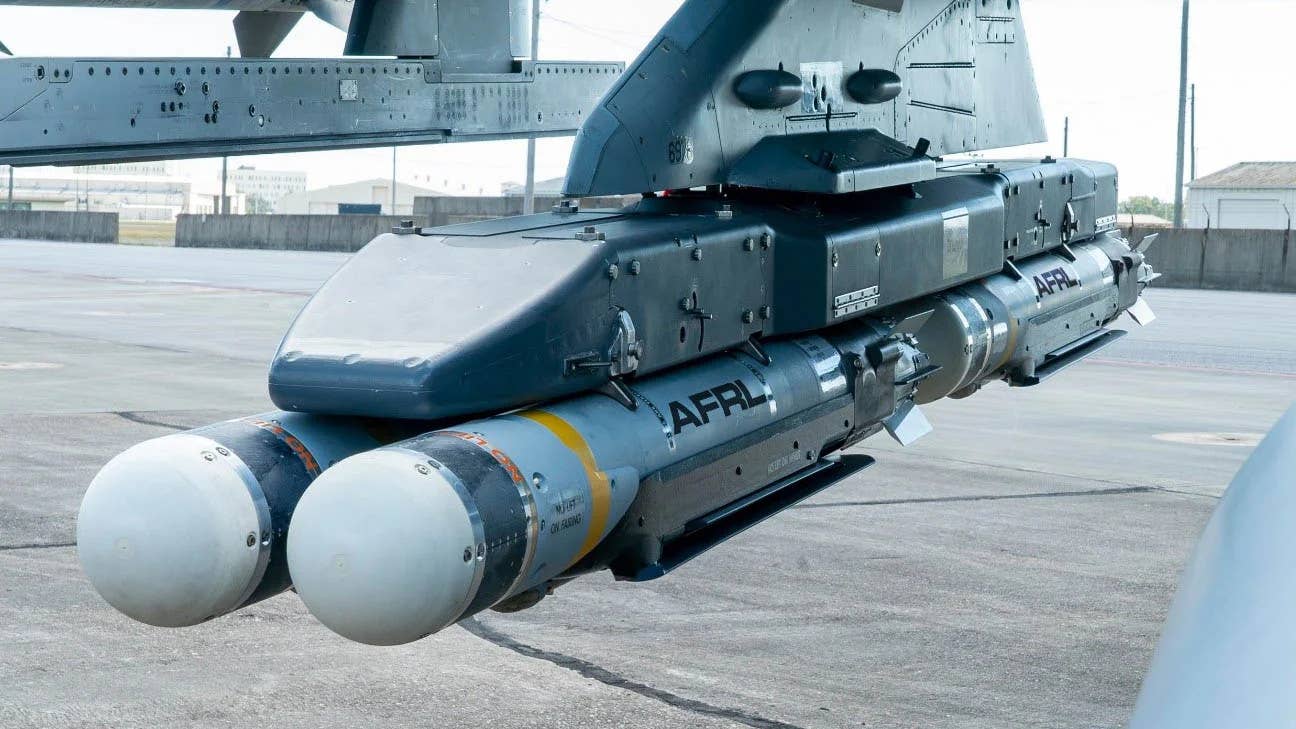
GBU-39/B Small Diameter Bombs with seekers with "home-on-GPS-jam" capability seen during a test.
SOCOM's interest in this kind of capability does underscore how very real a threat electronic warfare systems pose to U.S. forces now, something that is only expected to become more pronounced as time goes on.
Ground-based jammers, in addition to systems in other domains, could scramble friendly communications, disrupt GPS connectivity, and otherwise hamper the functioning of other key networks. GPS jamming, as well as spoofing, could be particularly problematic given that the system is used for both navigation and weapon guidance, meaning that this could prevent the use of certain key precision munitions or at least reduce their effectiveness.
Though this has all been increasingly apparent for years now, as The War Zone has highlighted on multiple occasions in the past, the current conflict in Ukraine has really hammered the point home.
“The agility being displayed by both parties, in the way that they’re executing operations in the [electromagnetic] spectrum, is awesome,” Air Force Col. Josh Koslov, head of that service's 350th Spectrum Warfare Wing, told reporters at the Air & Space Forces Association's main annual conference in September, according to C4ISRNet. “Both sides are doing the cat-and-mouse game very, very well.”
Russia has long been making significant investments in electronic warfare systems, including a multiple of ground-based types, since the end of the Cold War, in no small part to help offset historic advances enjoyed by the U.S. military and other Western armed forces. Even before launching its all-out invasion of Ukraine in 2022, the Russian military had been employing these capabilities against that country's armed forces.

Russia's Krasukha-4, which consists of both of the truck-mounted systems seen here, is one of the country's most advanced ground-based electronic warfare capabilities and has been used in Ukraine since 2022. It's stated purpose is to detect and jam large radars, such as those on airborne early warning and control aircraft, and satellites. Russian Ministry of Defense
China's People's Liberation Army has also put heavy emphasis on electronic warfare capabilities for the same kinds of reasons that Russia has, which has not gone unnoticed by the U.S. military.
In recent years, the U.S. special operations community has also been in the process of shifting its primary attention to preparing to support future high-end conflicts after decades of hunting terrorists and conducting other low-intensity missions around the world. This, in turn, has raised questions about how special operations forces might be best employed in a major fight, such as one against China in the Pacific.
Finding and neutralizing high-value assets, including air defense systems, has long been a potential mission for special operations forces on the ground, and is something that has come back into vogue in the current context. It's not hard to see how this then extends to looking for and destroying electronic warfare systems. An anti-radiation munition able to zero in on electronic warfare systems could potentially be used directly against radars and other emitters, too.
In an environment with heavy electronic warfare jamming, special operations teams on the ground could offer advantages over other options for getting at these kinds of targets, including stand-off strikes from the air or sea, so long as those units can be effectively inserted to begin with. A man-portable loitering munition, especially one capable of autonomously searching for and engaging targets after launch, would also allow those units to still keep distance between them and the actual target area. This would help reduce their vulnerability or the possibility of the presence being detected at all.
An anti-radiation loitering munition based on something like the Altius 700 could also be employed from other platforms, such as crewed and uncrewed aircraft and watercraft. If the weapon with the CECMS is small enough to fit inside a standardized Common Launch Tube (CLT) it would open up an immense number of possibilities in this regard.
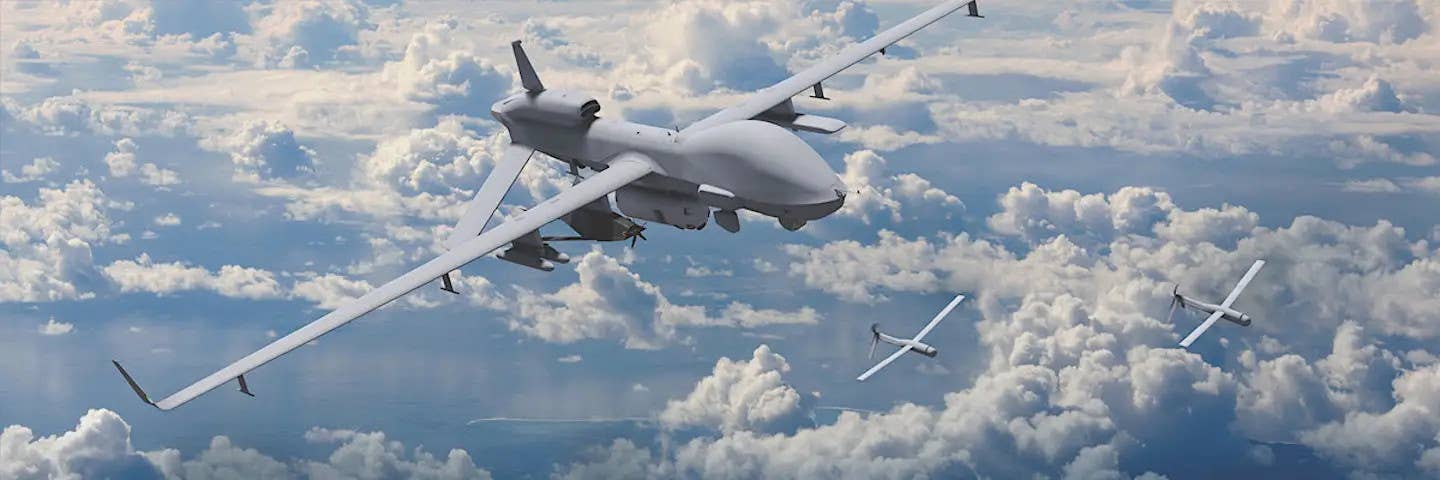
A rendering of an MQ-1C Gray Eagle launching Altius 600 drones. Variants of the Gray Eagle are service with the U.S. Army special operations units, among others.
Whatever their mode of employment Special operations forces could use unarmed drones with the CECMS equipped just as a sensor to help provide real-time intelligence about the location and activities of enemy electronic warfare systems, and conceivably other emitters, and otherwise improve situational awareness. U.S. special operations units on the ground already have access to backpack-mounted electronic support measure systems (ESM) that can detect and geolocate signal sources, which you can read more about here.

Marine special operators during an exercise. The individual seen at the left is carrying a backpack-mounted Joint Threat Warning System (JTWS) electronic support measures system (indicated further by the white arrow).
ESM systems, in general, are becoming more commonplace at various levels within the U.S. military, as well as among adversaries, from space-based capabilities down to the backpack-based ones, which could help with targeting CECMS-equipped loitering munitions, as well. "Hunter" drones with an ESM package could operate cooperatively with "killer" ones with the anti-radiation seeker, too.
On top of all this, there has been a surge in interest in electronic warfare systems in recent years to defeat various kinds of drones, something that has increasingly become a factor in the conflict in Ukraine. This means that anti-radiation loitering munitions might become a key tool for clearing the way for other uncrewed systems, as well as other friendly forces, in the future. With SOCOM's stated concept of operations in mind, another option would be to send out these kamikaze drones proactively and have them loiter in a critical area where they could then immediately move to engage anything that then attempts to jam other incoming friendly drones, airstrikes or other assets.
All told, it remains to be seen how SOCOM's desired electronic warfare system-hunting seeker capability, integrated onto a loitering munition or anything else, might ultimately materialize. At the same time, there is a clear and understandable desire for more ways to neutralize threats in the electromagnetic spectrum, which are very real now.
No comments:
Post a Comment